
Film Review | Star Wars: The Last Jedi
Producers: LucasFilm, Walt Disney Pictures
Runtime: 152 minutes
MPAA Rating: PG-13
EE Critic Score: 7/10
The Last Jedi is the eighth episode of the long-running space fantasy series Star Wars, and most immediately a sequel to 2015’s The Force Awakens. It was written and directed by Rian Johnson, whose biggest previous film was the 2012 time-travel film Looper, and who has been signed to make a stand-alone trilogy of Star Wars films at some future date.
This film, as I’m sure you’ve noticed by now, gives a lot to talk about, much more than The Force Awakens did. There were parts that I really liked, and parts that I didn’t care for as much, but I could talk about nearly every moment of screentime; there’s quite a lot packed into this movie.
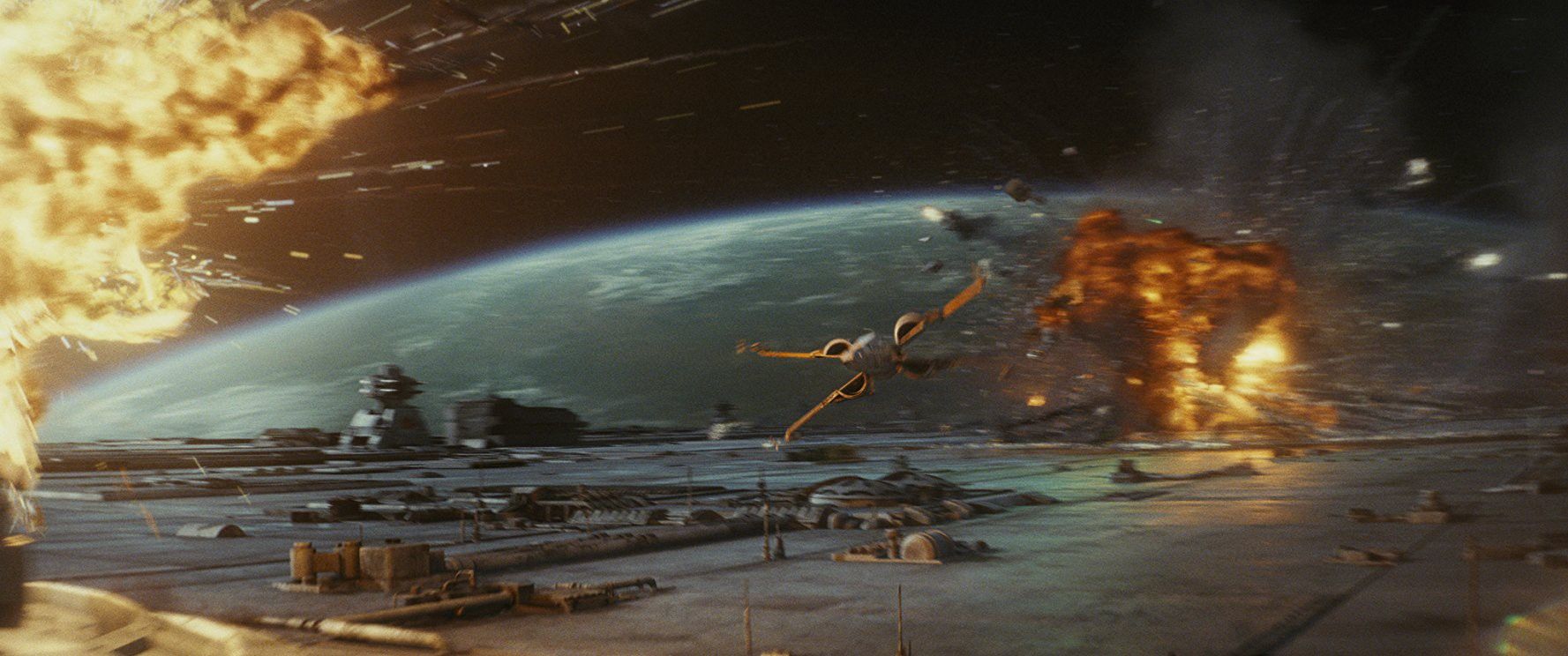
Synopsis
The film picks up immediately after the events of Episode VII, The Force Awakens. The Resistance, having successfully destroyed the First Order’s Starkiller superweapon, is nonetheless forced from their hidden base in the Ileenium system by the arrival of the First Order’s fleet, including the siege dreadnought Fulminatrix, which destroys the base as the last of the Resistance fighters escape to their flagship, the Raddus.
Commander Poe Dameron (Oscar Isaac) leads a bombing run against the dreadnought, whose mighty cannons are turning against the Raddus. The attack succeeds in disabling the Fulminatrix, but at the cost of heavy losses to the Resistance. General Leia Organa (Carrie Fisher) berates Dameron for his recklessness and demotes him to the rank of captain.
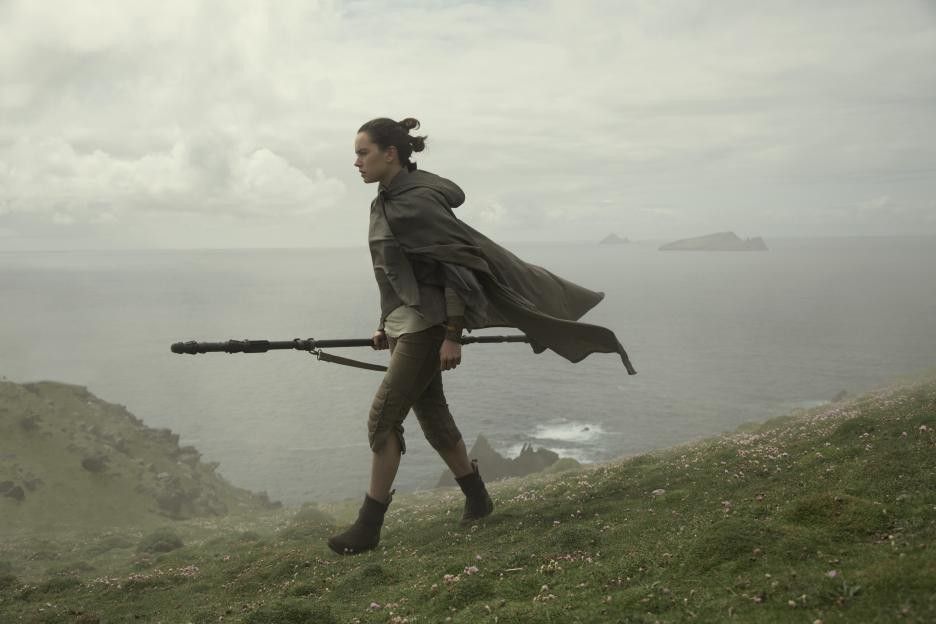
Meanwhile, Rey (Daisy Ridley) has found Luke Skywalker (Mark Hamill) on an island on the world of Ahch-To, but he is unwilling to train her in the ways of the Force. He has come to the ancient Jedi world to die, and the ways of the Jedi with him, after his student and nephew Ben Solo turned to the dark side and destroyed the Jedi Academy. Only when Rey makes it clear that she will pursue her Force ability with or without him does he agree to give her a few lessons.
Solo (Adam Driver) has taken the name Kylo Ren, and become a student of Snoke (Andy Serkis), an ancient Force user proficient in telepathy who has taken a place as the Supreme Leader of the First Order. Snoke has grown displeased with Kylo, saying he had hoped for a new Vader, but had gotten merely “a child in a mask”. As Snoke’s flagship, the Supremacy, arrives in the Ileenium system to join the battle against the Resistance Fleet, Kylo flies into battle in his TIE fighter, attacking the bridge of the Raddus and coming close to killing his mother, Leia Organa. He loses his resolve to do so, though his wingmen carry out the strike. Of the people on the bridge, including veteran commander Admiral Gial Ackbar, only Organa survives, and she is incapacitated.
This leaves Vice Admiral Amilyn Holdo (Laura Dern) as the ranking commander of the Resistance fleet. She orders a retreat through hyperspace. The First Order has, however, brought the Empire’s dream of hyperspace tracking into reality, and the Supremacy and its fleet soon arrive themselves. The Resistance’s smaller ships are able to outpace the First Order’s star destroyers, keeping out of range of their turbolasers. But they are running out of fuel, and will inevitably be caught.
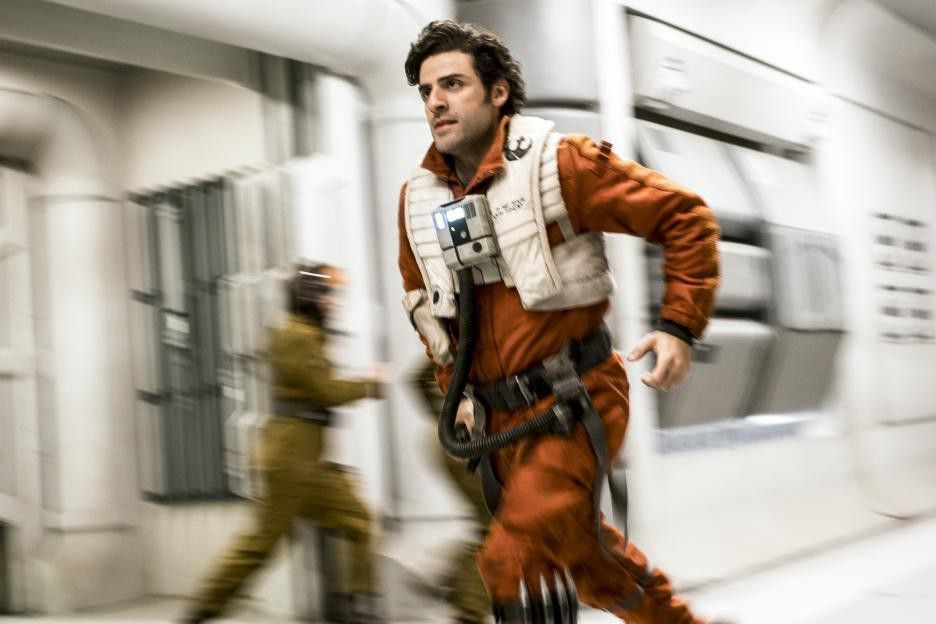
Dameron approaches Holdo, asking what her plan to defeat the Supremacy is. She recognizes Dameron as the fighter pilot Organa had just demoted, tells him her plans don’t involve X-wings, and dismisses him from her war room. Dameron, convinced that there is no escape from the First Order and that Holdo’s stay-the-course approach will get them all killed, goes to find some other help. He finds it in the defecting stormtrooper Finn (John Boyega) and Rose Tico (Kelly Marie Tran), a mechanic and sister of one of the bombers who died in the attack on the Fulminatrix. Tico believes that she could disable the hyperspace tracker aboard the Supremacy, allowing the fleet to successfully escape.
Back on Ahch-To, Rey begins experiencing shared visions with Kylo Ren. Forced to confront each other, but unable to attack one another, they talk. Rey finds Kylo to be resolute in his commitment to the Dark Side, but still conflicted. Believing that she can turn him to the light as Luke Skywalker did his father, she leaves Ahch-To to meet with him in person.
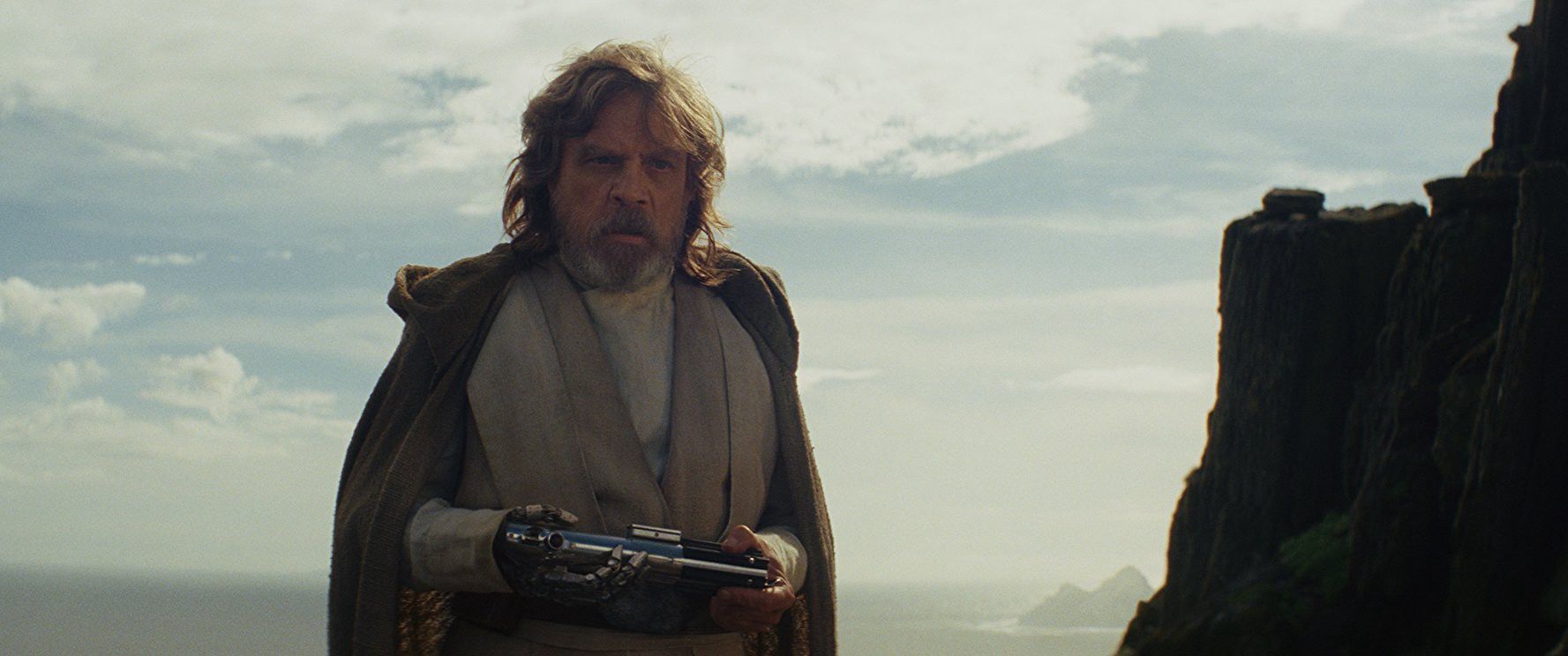
Distraught at having lost another student, Skywalker goes to destroy the sacred tree housing Jedi texts. He is met by the ghost of Yoda (voiced by Frank Oz), who destroys the tree himself with a lightning bolt, saying it is well past time for old sticks to burn, and that there was nothing in the tree which Rey did not already possess (Rey had, unbeknownst to Luke, taken the texts with her.) He encourages Skywalker not to give up on Rey nor on the Jedi.
While Dameron remains on the Raddus, Finn, Tico, and BB-8 go to the casino town of Canto Bight, in search of a “Master Codebreaker” recommended by Maz Kanata (Lupita Nyongo) to help them board the Supremacy. Tico is repulsed by the wealthy gamblers, who she says are mostly war profiteers whose money comes from selling to the First Order. They find the codebreaker at one of the tables, but are arrested for illegal parking before they can speak with him.
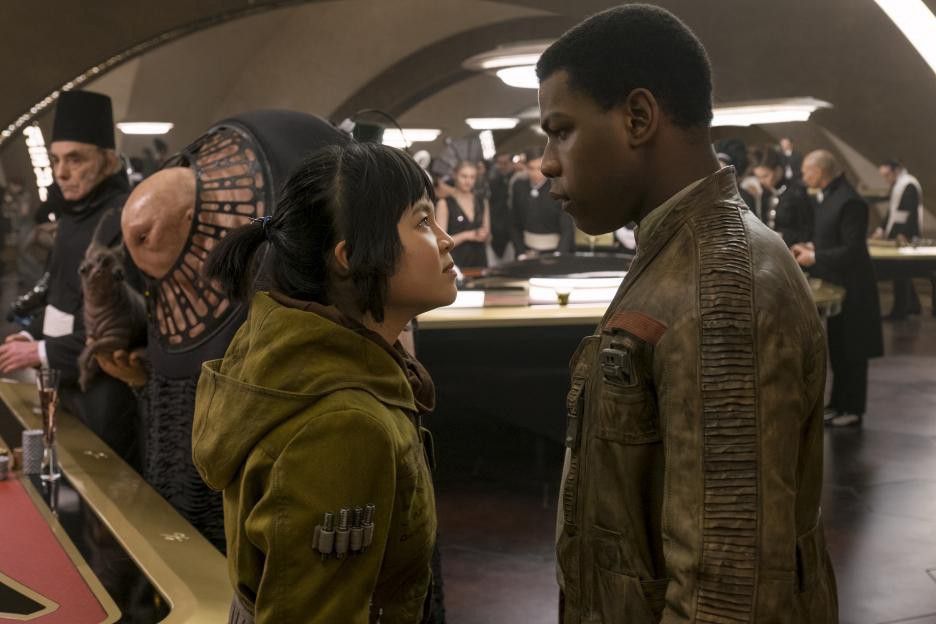
In jail, they encounter a man (Benicio Del Toro) who says that he is a codebreaker himself. As proof of his claim, he breaks them out of their cell. The mysterious slicer goes with BB-8 to steal a ship, while Tico and Finn get split off, escaping with a herd of horse-like creatures from the casino’s racetrack stables. They reunite outside the city and set off for the Supremacy.
The First Order is maintaining its assault on the Resistance fleet, picking the ships off one-by-one as they run out of fuel, and Dameron is growing more desparate. He convinces himself that Holdo’s inaction is due to her acting as a double agent for the First Order and stages a mutiny.
Rey and Chewbacca (Joonas Suotamo) arrive in the Ileenium system aboard the Millenium Falcon. Rey boards an escape pod and turns herself over to the First Order, and is taken by Kylo Ren to Snoke’s throneroom. Snoke is pleased to see that Kylo has captured the girl who is, in Snoke’s words, Kylo’s Light Side counterpart, whose power grows in tandem with his. Snoke says that it was he who linked their minds in the Force. He knows that Rey intends to turn Kylo against him, but insists that his mind-reading abilities make him immune to betrayal. His is proven wrong when Kylo, making him believe he is about to kill Rey, kills Snoke instead. Kylo and Rey fight off Snoke’s bodyguards.
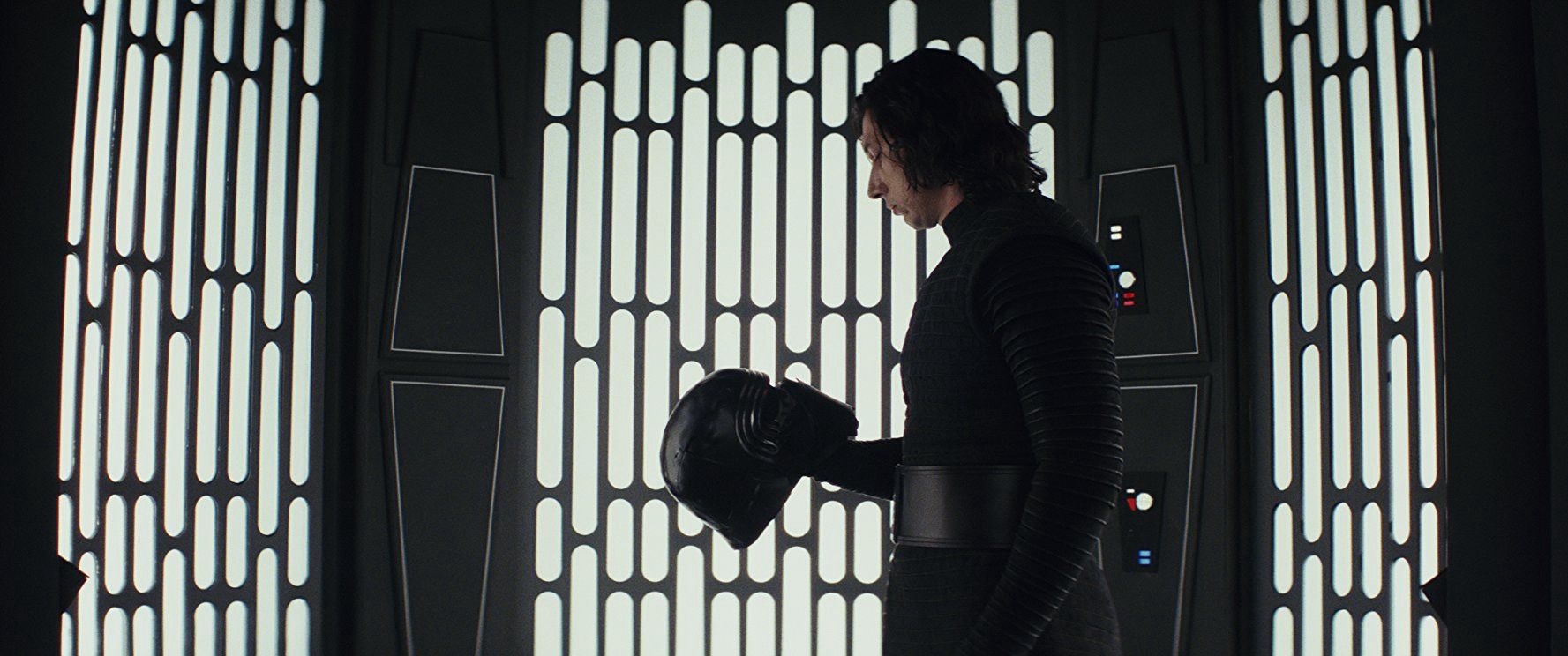
After the last guard has fallen, Kylo tells Rey to abandon old concepts of Jedi and Sith, and join him in conquering the galaxy. Seeing that he is still very much committed to the Dark, Rey refuses and fights her way away, destroying Anakin Skywalker’s lightsaber in the process.
Aboard the Raddus, General Organa recovers from her injuries enough to resume command. She ends Dameron’s mutiny and restores Holdo’s strategy. The Raddus has gained enough distance to serve as a launching point for transports small enough to evade the First Order’s trackers, aboard which the Resistance flees for Crait, a mineral-rich world home to an abandoned Rebel base.
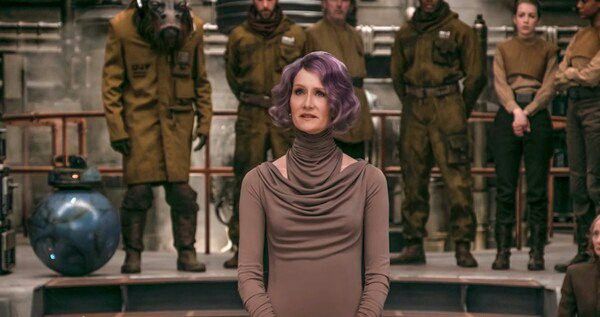
Finn, Tico, BB-8, and the slicer reach the Supremacy. On the trip, the slicer spoke with Finn, spelling out his life philosophy of “Don’t Join”, because in his mind, everyone is essentially the same, and by committing to a cause, one loses ones freedom. The three stow aboard disguised in First Order uniforms, with BB-8 hiding under a box. They go unnoticed by all but BB-9E, who raises the alarm just as the slicer breaks into the tracking systems room. Finn and Tico are taken to be executed by Captain Phasma (Gwendoline Christie), with the slicer selling his knowledge of the Resistance for his freedom.
Vice Admiral Holdo, who has stayed behind alone aboard the Raddus, turns it to face the First Order’s fleet. She sets a hyperspace course straight ahead, and sets off through the Supremacy and several other star destroyers, blasting them in half. This attack gives Finn and Tico a chance to escape. Finn gets his revenge on Phasma, striking her down with a stun baton and leaving her in the burning wreckage.
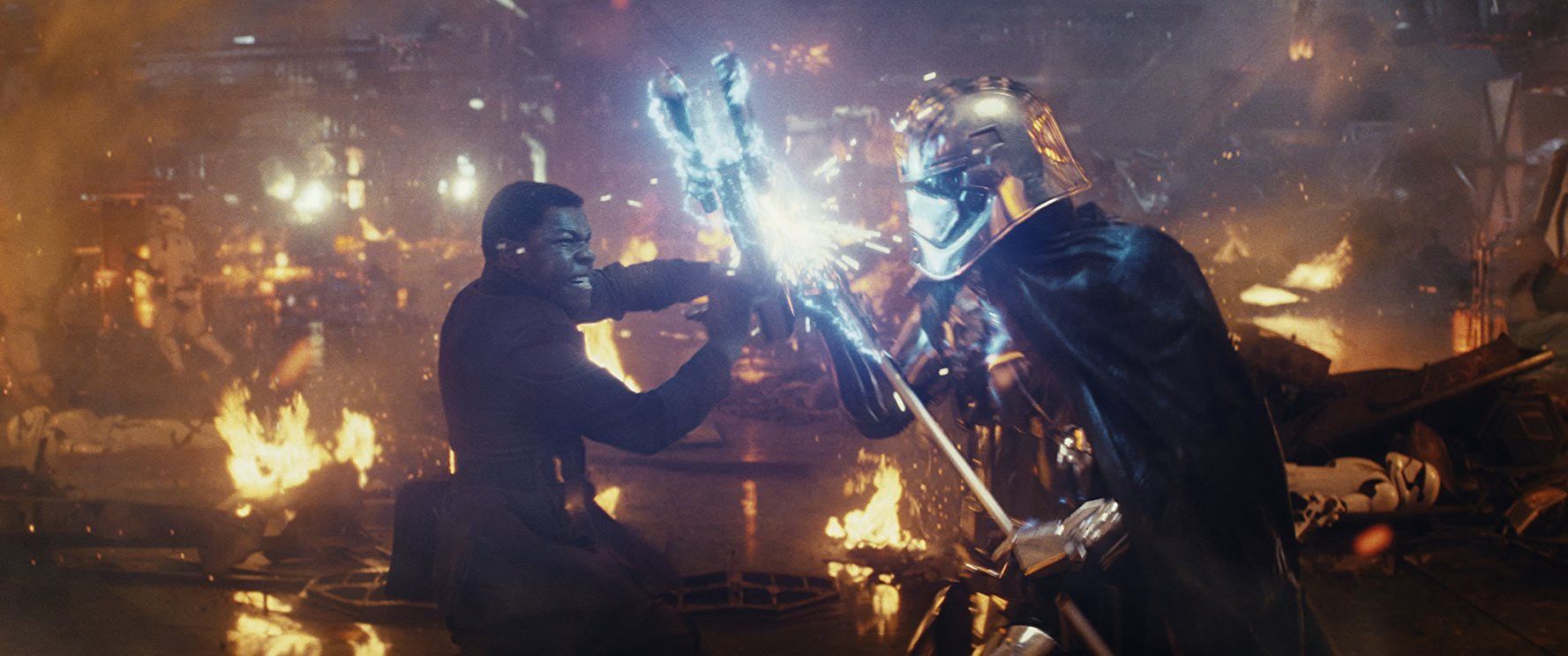
General Armitage Hux (Domhnall Gleeson) runs to Snoke’s throne room to report the Supremacy’s impending doom, only to find the Supreme Leader cut in half on his throne, his bodyguards similarly killed and his prized pupil unconscious. Kylo Ren comes to, tells Hux that Rey had killed Snoke, overpowered him, and escaped. He declares himself the new Supreme Leader, Force-choking Hux into submission. They set off for Crait, to where the slicer had said the Resistance would be fleeing.
The First Order deploys a force of walkers in the salt plane outside the Rebel base. Captain Dameron leads a charge on their lines, with all remaining Resistance pilots, and even some non-pilots, including Finn and Tico, flying in decrepit skimmercraft. They are soon joined by the Millenium Falcon, piloted by Chewbacca with Rey manning the cannons. Kylo Ren orders the First Order’s air support to destroy the Falcon. Chewbacca leads the TIE fighters away from the battle through a network of caverns.
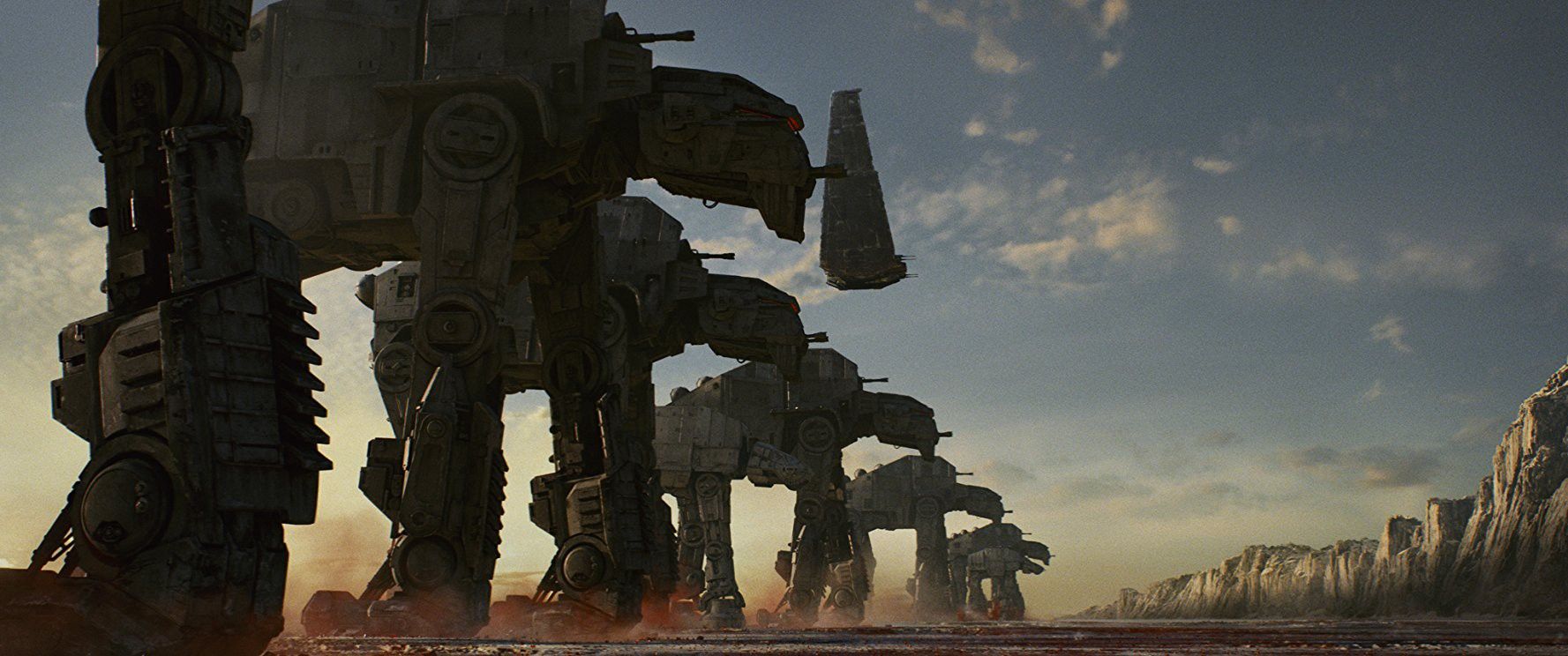
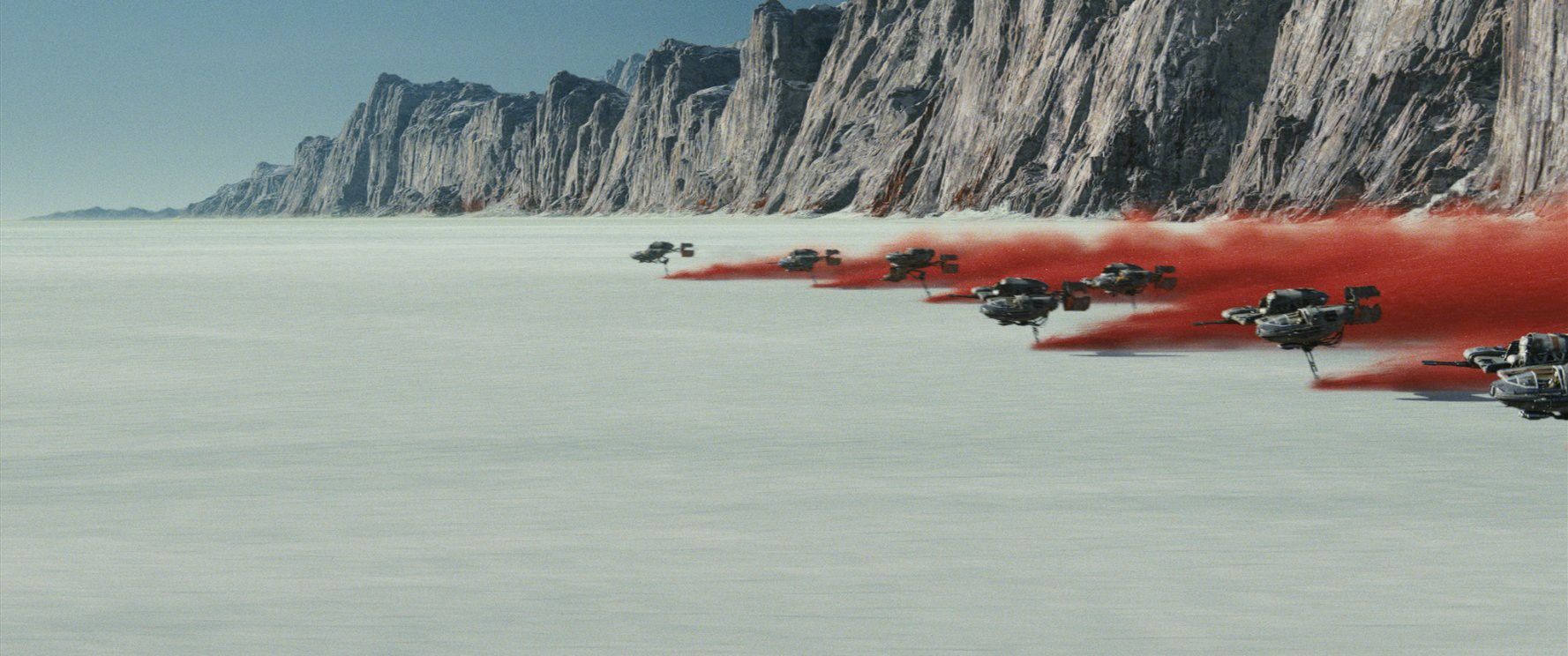
Dameron’s charge is a failure; the First Order’s walkers are too powerful and armored. Dameron called for a retreat, orders that Finn disregards. He charges at a breaching cannon, a piece of miniaturized Death Star technology which Finn knows would largely destroy the Rebel base. He is knocked off course at the last minute by Tico, in her own skimmer. She tells him that they can only win the war with the First Order by saving what they love, not destroying what they hate.
The cannon fires, and the base is breached. The Resistance begins searching for a back way out of the mines. One last hope arrives in the form of Luke Skywalker, who speaks with his sister Leia, then steps out on the battlefield. Kylo Ren sees his old master and becomes enraged. He orders all his tanks and cannons to open fire on Skywalker. The attack is sustained for nearly a full minute, only ending when Hux steps in, and yet, when the plasma stops flying, Skywalker emerges from the dust unscathed. Kylo goes out to face Skywalker himself.
Inside the mine, the Resistance fighters follow vulptices, small canine creatures native to Crait, through the tunnels, hoping to be led to a way out. They find an exit, but it is blocked by rocks which only the vulptices are able to sqeeze through. The Falcon lands at the other side, and Rey uses the Force to remove the rocks.
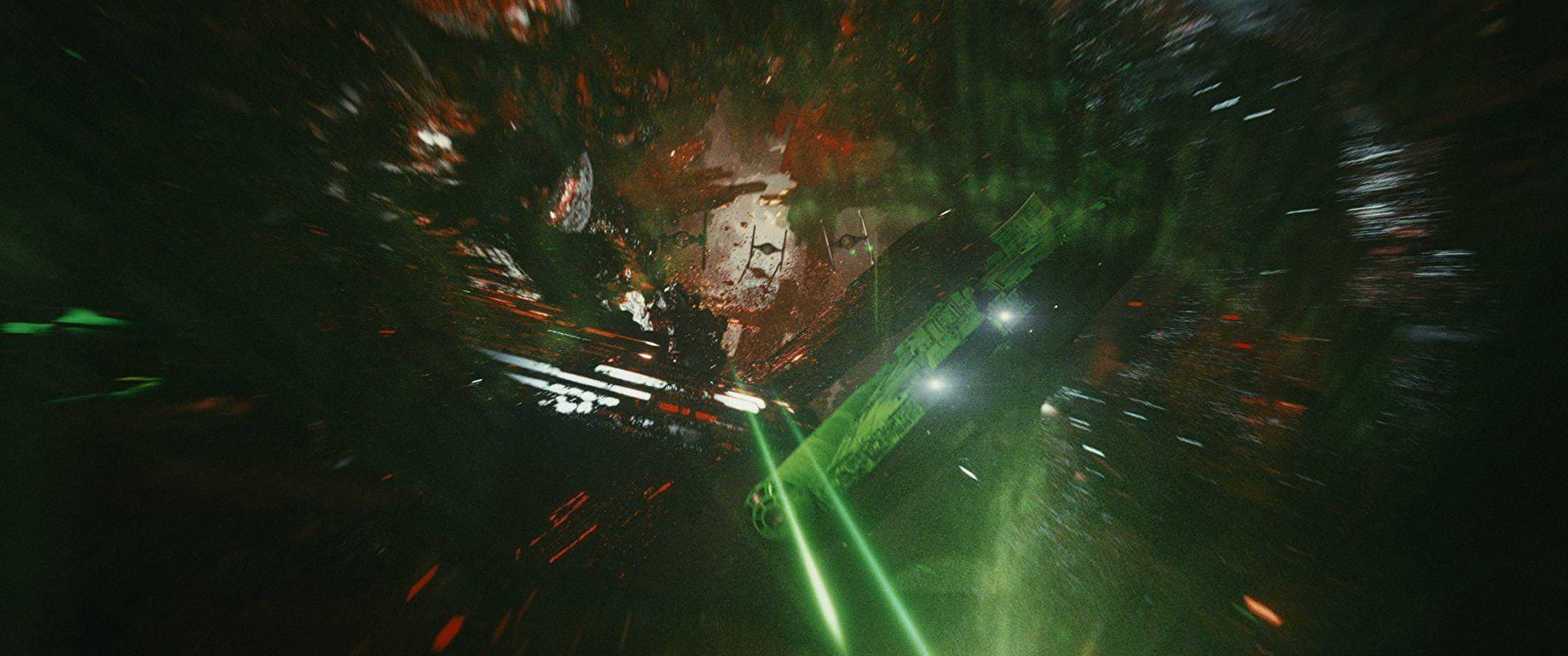
Skywalker apologizes to Kylo for failing him as a master, but says he is not there to redeem him. Kylo attacks Skywalker, who sidesteps his lightsaber strikes. Once Kylo does level a blow, his blade passes through Luke’s body. The Jedi is still on Ahch-To, projecting an image of himself on Crait through the Force. He tells Kylo that Rey will become a Jedi, and that he will be “seeing [Kylo] around” himself. Then he ends the illusion.
The effort of the projection is too much for the aged Jedi. As Ahch-To’s twin suns hang over the ocean before him, Luke Skywalker dies, his body fading into the Force.
Kylo Ren leads his troops into the Rebel base, but he is too late. Rey has gathered the surviving Resistance fighters aboard the Millennium Falcon. Still linked through the Force, Rey and Kylo see each other before the Falcon takes off, headed to meet possible Resistance allies in the Outer Rim.
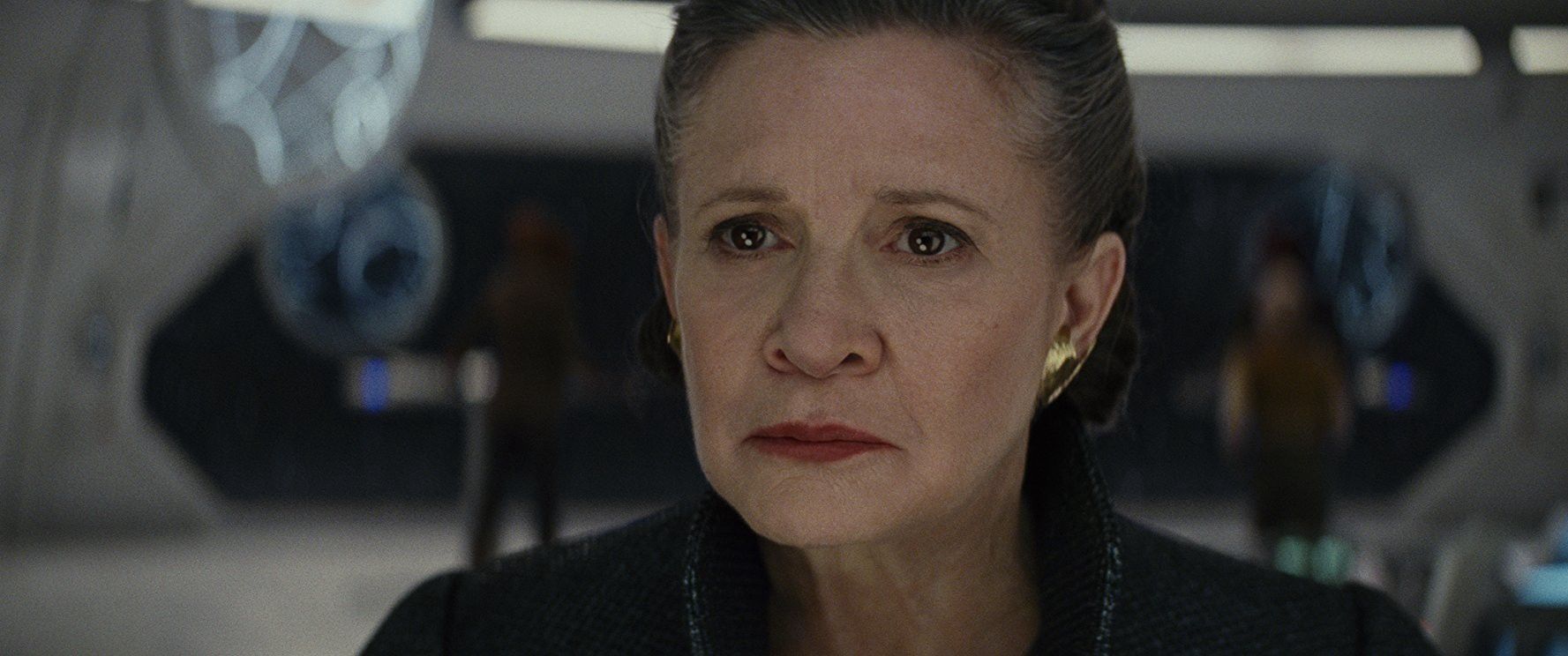
Analysis
Story
Rey and Kylo Ren’s shared plotline is the best part of the movie. Stating that Rey’s power is tied to Kylo’s by the Force’s balanced nature is an interesting thought, though I’m not sure how much it holds up since Snoke is the one who said it, and I have no real reason that he has any great understanding of the nature of the Force. But regardless, Rey and Kylo both work to show new perspectives on the Force. Rey’s training under Luke is spare, to be sure, yet it shows the audience more of the world of a Jedi student than did the entirety of the Prequel Trilogy. Luke’s statement that the Force is not simply a means to lift rocks echoes George Lucas’s assertion that the Jedi not be treated as superheroes. Much of Star Wars media, including the films, showcase marvelously Jedi power; less explore Jedi philosophy. Such exploration is welcome.
On the topic of Luke Skywalker: I’m glad to say that I finally cared about the character. A core flaw of the Original Trilogy, and of the post-Return of the Jedi Legends stories, was that Luke’s often less of a character than a template for a character. His story, like much of Star Wars, was cobbled together out of mythic tropes that have existed in human fiction for time immemorial, and there was often a lack of anything specific in his characterization to latch onto, especially when the Prequels recontextuallized the series as a whole toward focus on Anakin Skywalker. Here, Luke is shown in a sort of post-fallen state where he hides in fear of Kylo Ren and of Rey and any other would-be Jedi but mostly, I think, in fear of himself, calling to mind Ulic Qel-Droma in more ways than one. Legends Luke Skywalker had plenty of students go bad; that’s what they used for villains in between Imperial admirals who returned from deep space missions with new superweapons. But it never seemed to shake him. His fallen students would either die or unilaterally be forgiven for mass murder, and Luke would just keep on rebuilding the Order, because that was what needed to be done from an overarching plot standpoint.
And, while that remains what needs to be done from an overarching plot standpoint, Luke as we see here isn’t about to blindly forge ahead without a care for the wake of second-rate Vaders he’s leaving behind. He’s taken responsibility for Kylo Ren, and, as the last of the Jedi, he’s taken responsibility for Vader as well. He has internal conflict here, which is the root component of the decisive characterization and agency he often lacks.
Kylo Ren is the most compelling villain Star Wars has seen in years. Adam Driver was good in The Force Awakens and he’s great here. Seeing a successful overthrow of one Dark Side user by another feels a long time in coming, considering how often it must occur off-screen. Outside of James Luceno’s Plagueis and maybe a couple of other works, I don’t recall anything focusing on a straightforward succession like this.
The scene itself wherein Kylo kills Snoke was confusing to me when I first saw it. I thought Snoke knew Kylo was going to kill him, but got too distracted explaining his telepathy prowess to Rey to do anything to stop him, which struck me as pretty stupid. In discussion of the movie with others who had seen it, I figured out what had really happened. The scene was clever; I was not.
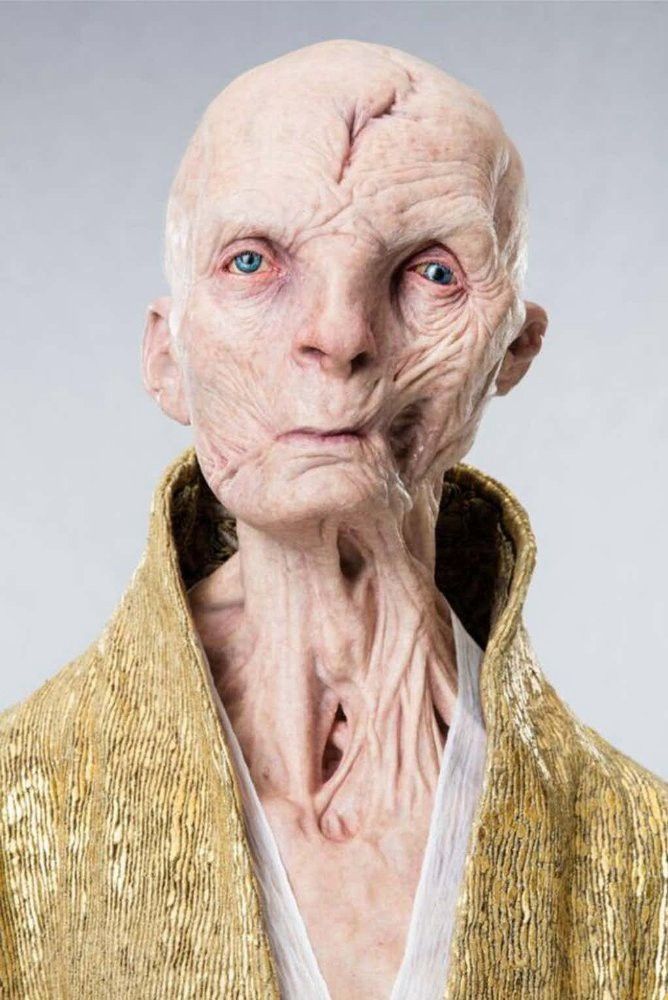
On the subject of Snoke: many Star Wars fans, myself included, were disappointed to be walking out the theater without knowing anything more about Snoke’s backstory. And since then, I’ve thought about this film in comparison to my favorite episode of Star Wars, Return of the Jedi. Because when that film was first released, filmgoers didn’t know anything more of Emperor Palpatine than filmgoers today know of Supreme Leader Snoke. Even I, when I first got into Star Wars, didn’t immediately realize that Chancellor Palpatine from Episode II and the Emperor from Episode VI were the same person, and I didn’t feel that ROTJ was worse for not knowing the ins and outs of Palpatine’s biography. So why does the same not hold true of Snoke?
My conclusion is that we knew enough of the Empire by the release of Return of the Jedi to know the Emperor and what sort of man he must have been. Two films in, and we don’t understand the First Order in the same way. This is an issue not only with this film, but with The Force Awakens as well, so I might go into detail in a separate post, but suffice to say that the conflict between the Resistance, the First Order, and the New Republic has been very poorly established in the Sequel Trilogy so far, and has been a contributing factor to the general sense of setting disorientation that I believe is hurting these films.
Now, onto the other half of the movie: Finn and Poe Dameron’s subplots. The film actually opens here, and the main tension of the film is in this storyline. But I don’t consider it the main plot, because it’s fairly clear that the filmmakers didn’t either. In writing the script, Rian Johnson followed Lawrence Kasdan’s approach toward writing The Empire Strikes Back. Regular readers will know that this is not a compliment coming from me. There’s no single huge, movie-breaking problem, but nearly everything I find so grating about Episode V is present here: the nonsensical tactical decisions on both sides, the solution to problems being the defiance of problems, the waste of interesting characters and ideas, the general sense that the characters we’re watching are just spending empty screen time so we don’t forget about them.
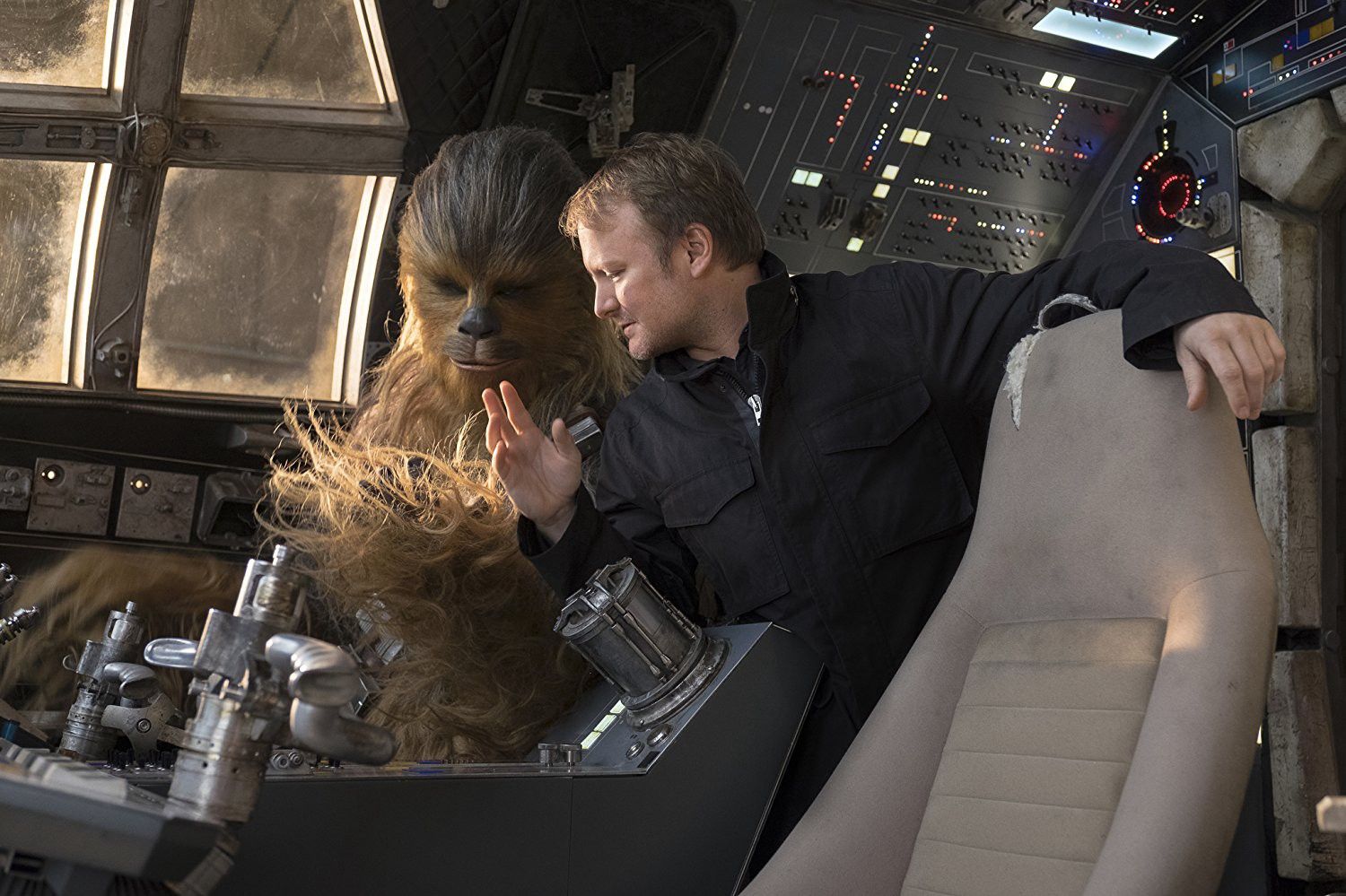
What I will say is that what is done with the characters of Finn and Dameron is more uniquely interesting than what was done with Han and Leia in Empire. With Finn, we see a greater exploration of the internal conflict introduced in The Force Awakens, set off by two new characters. In Rose Tico, we see the idealism and aspiration to heroism that pulls Finn toward the Resistance, while in Benicio del Toro’s DJ (the nickname given to the un-named slicer character in film promotion content) we see the other path, wherein Finn leaves the warrior’s life thrust upon him by the First Order entirely. And we see these two paths for their flaws: Tico is reckless in many of her actions, which brings real trouble. And the slicer’s actions show the inherent selfishness of cowardice. Finn’s ultimate commitment to the rebel cause as he faces off against Captain Phasma (who is, sadly, completely wasted in this film, a surprise considering she got her own novel in the buildup to The Last Jedi’s release) comes after a great deal of setup, and, as with Luke Skywalker, avoids the heroism by default problem Star Wars can have.
That said, Finn’s arc does get muddled by writing issues. Much ink has been spilled (or much web server space has been filled, really) about the Canto Bight scenes. I’ll speak about the looks of the place later on; here, I’d just like to say that Johnson really did fail at his apparent aims in these scenes. The scene wherein Tico describes her background as a child slave while Finn witnesses instances of animal abuse, specifically. This scene called to mind (to my mind, at least) the “women in refrigerators” concept identified and named by writer Gail Simone. Now, this scene isn’t an example of a WIR moment, but it is an instance of using heavy, dark themes in a flippant way to advance a tangentially related story.
Star Wars has touched on slavery before, of course, in the prequels with the character of Anakin Skywalker. And while the Prequels certainly weren’t anything as heavy an examination of the subject as, say, Roots, George Lucas did deal with the subject seriously, showing how Skywalker’s early life of working to appease a master who could detonate a bomb somewhere within his body at any time contributed to both his resentment of the Jedi Order, who did nothing to rescue his mother and other Hutt Space slaves from the same fate, and his personal philosophy that power held by threat of execution was, on some level, legitimate. Slavery was core to the Prequel’s story of the fall of Anakin Skywalker and the rise of Darth Vader.
In the sequels, we have Finn, whose background as a stormtrooper pressed into service at near-infancy provided Johnson a great opportunity to talk about slavery if he really wanted to. He didn’t want to; he just needed a cheap, audience-understandable source of angst for Rose, who isn’t even an angsty character. Slavery sat unexamined in a pile of generic badness, alongside animal abuse, decadence, and war profiteering. Serious matters are treated unseriously, written out of the script as quickly and abruptly as they were written in.
The other weakness in Johnson’s script is a bit of over reliance on anticlimax. Anticlimax, as a general rule, only works to comedic effect. A spaceship turns out to be a clothes iron, and the audience have themselves a little chuckle. A shady criminal behaves shadily to advance his own interests in a scene presented as some kind of big twist, and the audience will get annoyed at having sat through a shaggy-dog story. The operative phrase in many reviews of The Last Jedi has been “defiance of expectations”. And that’s great. Around here, our perfect 10/10 grade only gets awarded to things that defy expectation. But there’s defying expectation by taking the story in new, unexpected directions, and there’s defying expectations by avoiding any surprises and staying the course from setup to payoff: defying the expectation of expectation defiance, if you will. Both approaches are taken at various points in this film, and only one works. Expectations of which one will not be defied.
The other subplot concerning Poe Dameron’s conflict with Vice Admiral Holdo also suffered from the Sequels’ lack of established setting. What I’ve read of Holdo online would have been great to see here. What we get is the maverick pilot butts heads with uptight, by-the-book commander trope, only where the pilot actually is more a liability than an asset, and the hardnosed commander is also someone’s hippie aunt, in some attempt at trait juxtaposition that doesn’t amount to much. It’s not a bad idea, at all, to address the rebel faction’s lack of credible military leadership, if you can find a way to make criticizing the heroes for their lack of blind loyalty to authority when the villains are committed fascists work. Here it certainly doesn’t work. Every character involved comes off a unlikable egomaniacs, to a degree that seemed unnecessary.
Oddly enough, a similar theme is handled better in the film’s climax, when Tico stops Finn from kamikazeing the cannon. Finn was willing to sacrifice himself, just as Poe was willing to sacrifice himself and the pilots under his command. They both had to learn that sometimes the best sacrifice to make isn’t ones life but immediate victory, because the point of any righteous war isn’t to destroy some enemy but to save some friend. It speaks to the fact that merely opposing evil isn’t the same as being good. This was also touched on in the very gray portrayal of Saw Gerrera’s Partisans in Rogue One; the only thing uniting the rebels was opposition to the Empire, and while terrorist and smugglers might be useful in a fight, their utility in preserving democratic rule of law is somewhat lessened. The real world’s history is full of groups (the Bolsheviks, the revolutionaries of late 18th-Century France, the warlords of post-colonial Africa, the Taliban) whose enemies were genuinely evil people, and who were themselves full of genuinely evil people. That’s not just a fact worth exploring, maybe; it’s something necessary to recognize in films about revolutions, and it’s something that was sorely lacking in Lucas-era Star Wars. I’m glad to see it now, and expect more in Episode IX.
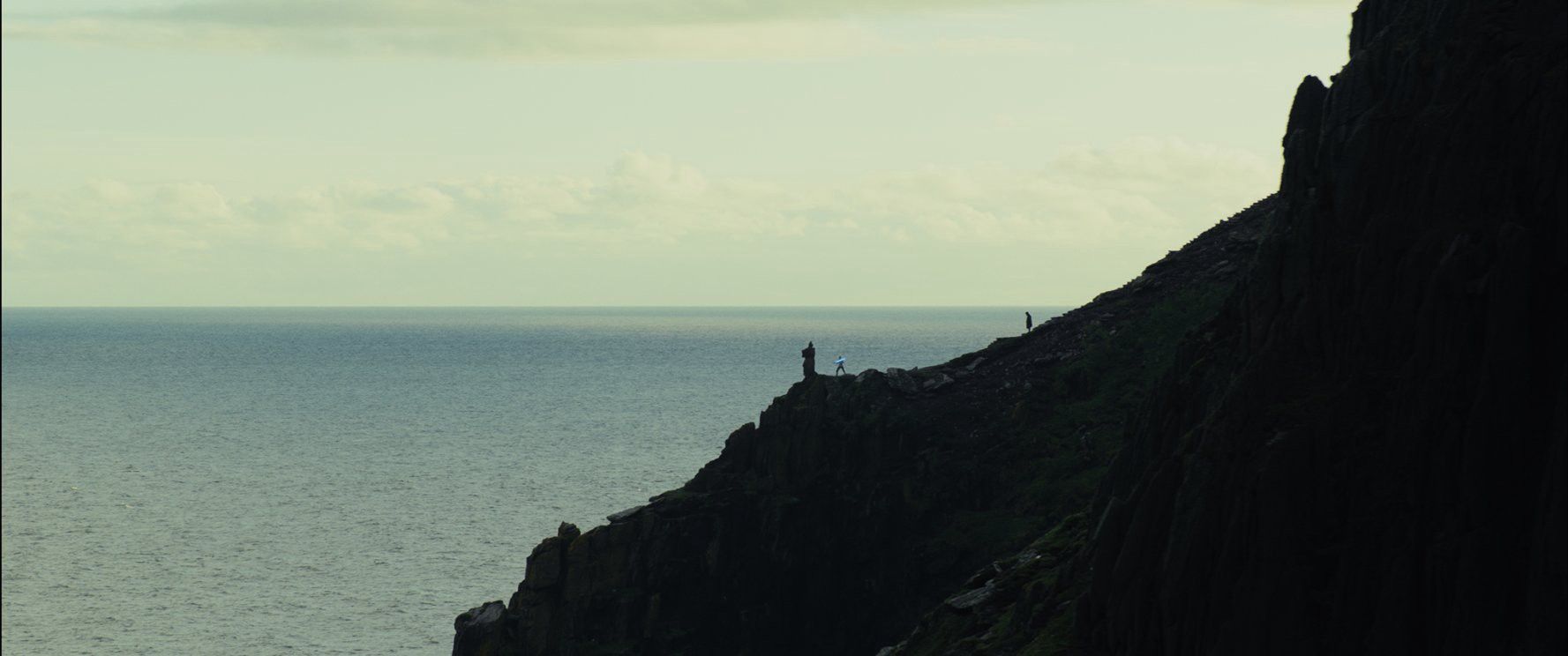
Filmmaking
From a cinematography standpoint, this is one of the better Star Wars films. I think that overall Revenge of the Sith and Rogue One looked better, but The Last Jedi has as its high points some of the most visually striking and memorable shots in the franchise. Holdo’s hyperspace jump through the First Order fleet, several aerial shots on Ahch-To, the skimmer charge on Crait, the cave of mirrors Rey dives into, and Snoke’s throne room all looked great.
Canto Bight did not look great. It seemed that the special effects and props department couldn’t quite deliver on the designers’ ambitions, which weren’t even all that ambitious. The Outlander Club from Attack of the Clones, the opera house from Revenge of the Sith, and even Challum’s Cantina in A New Hope seemed more otherworldly that this place, which just looks like some aliens landed in Monte Carlo and painted it beige and gold. I will say, though, that I appreciated the reference to sister franchise Indiana Jones in the wardrobe of the master codebreaker.
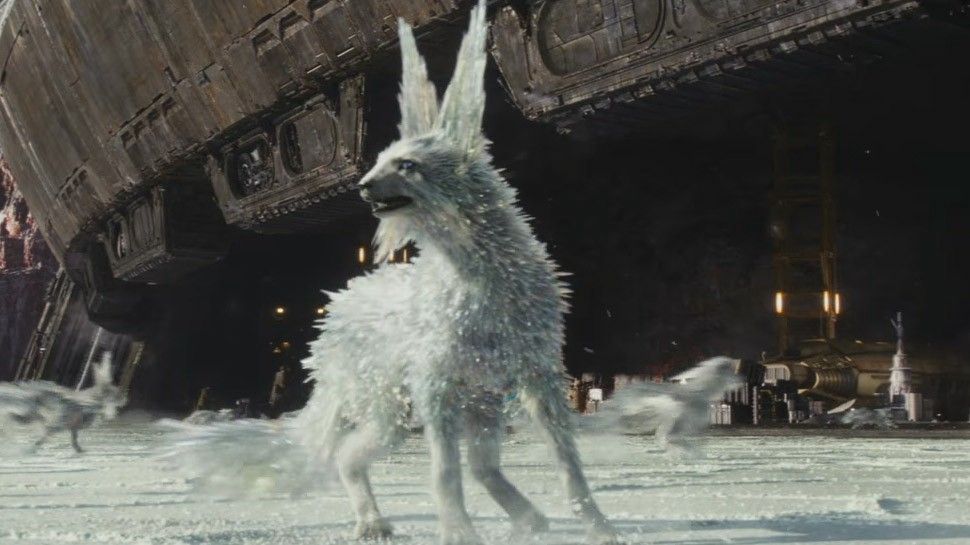
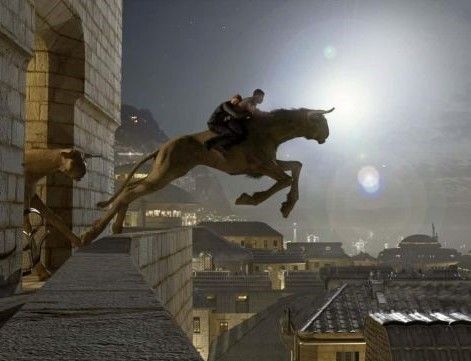
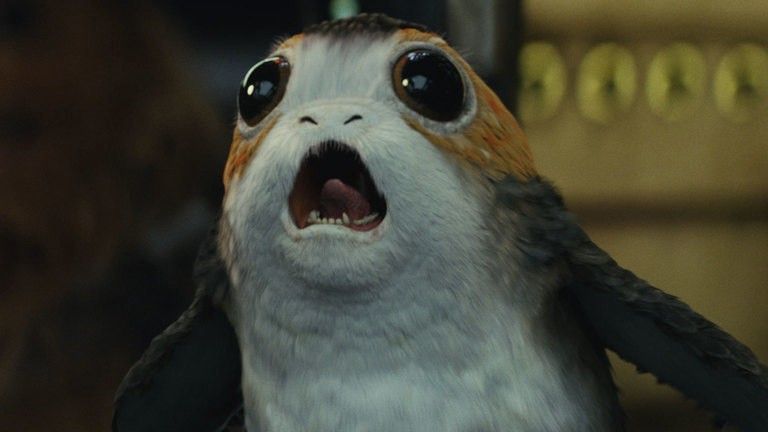
Creature design was quite good. Both the racing beasts (fathiers) and the crystal foxes (vulptices) were well designed fantasy animals; both were simultaneously clear analogues for real-world creatures and different from anything on earth. The porgs were cute, as intended, and never outstayed their welcome. Yoda’s appearance mimics the puppet from The Empire Strikes Back, which I’m of mixed mind on. On the one side, it makes sense to keep all of Luke’s and Yoda’s shared scenes consistent through the series, but on the other, since Yoda in this film is CGI anyway, why not use the prequel design that actually seemed alive?
It goes without saying that John Williams’s score was good. Much of it builds on the melodies he wrote for The Force Awakens or the Lucas films, so there aren’t really any great new themes on par with “Rey’s Theme” or “The Imperial March”, but a bright spot is the Canto Bight sequence, where Williams makes a return to orchestral pops with a piece gleefully reminiscent of “The Cantina Band”, which is probably my favorite new tune in the film.
The way the mind-meld scenes between Rey and Kylo Ren are presented is effective and kept very simple. The inclusion of some Force techniques not shown on screen before was a treat for me and other in-depth Star Wars fans, though it was apparently quite confusing for everyone else. For the record, every Force ability featured here had direct precedent in previous Star Wars works, if you count Snoke’s linking of Kylo’s and Rey’s minds as an unorthodox application of Battle Meditation technique. Not that this matters much, since every Force power was a new thing when it was first introduced. But after years of any new powers only appearing in books, comics, and games, I suppose film-only fans forget that. (Now that the door has been re-opened, though, please feature Malacia in Episode IX.)
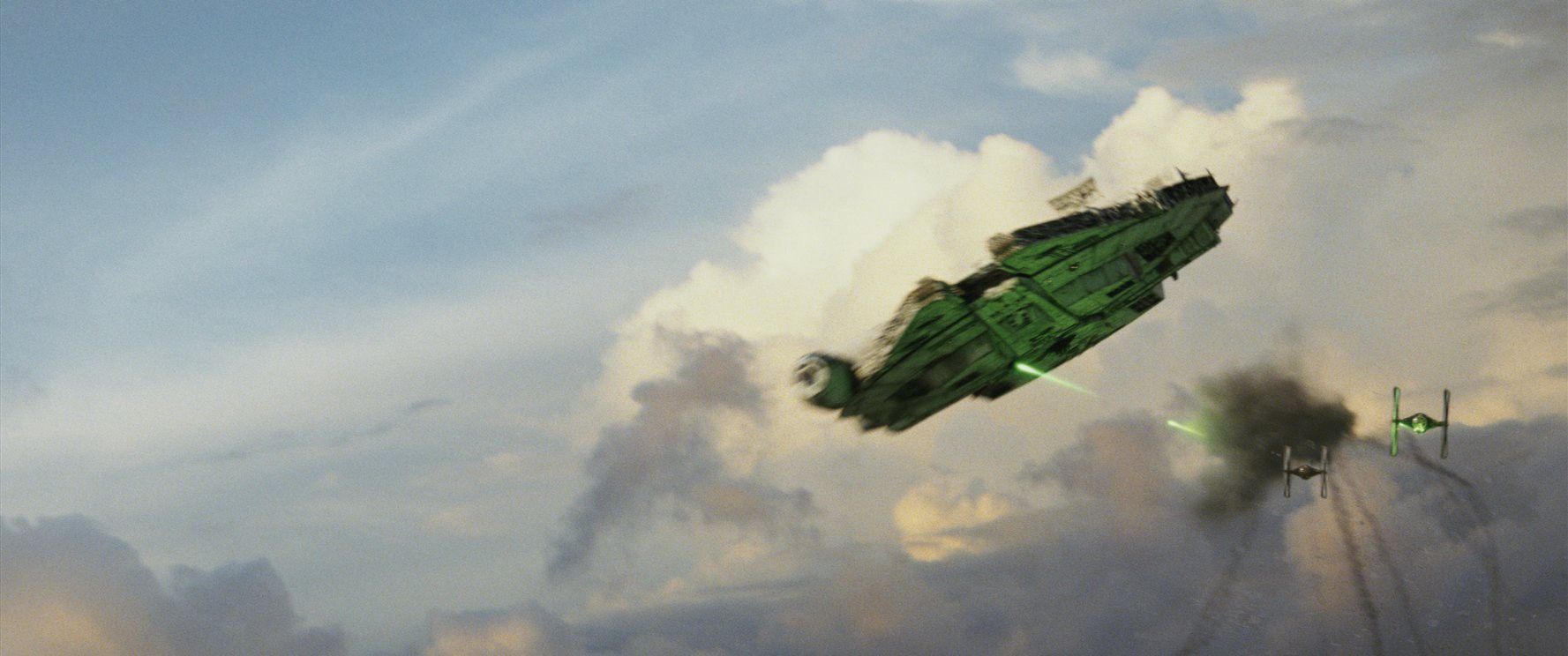
Recommendation & Rating
There is a lot of room for complaint in The Last Jedi, but I think one can take heart in the fact that every failure occurred when the filmmakers swung and missed at something. And, while I certainly would rather a film I see be free of obvious flaws, at least The Last Jedi tries. Star Wars isn’t going to die from coming up short of ambition, the Prequel Trilogy proved that much. Star Wars is going to die when the people making it don’t care anymore or run out of ideas for it. We’re not there yet.
If you’re a Star Wars fan, you’ve seen this. Even if I wasn’t over a month late with my review that would be the case. If you’re not a Star Wars fan, I can’t see this installment bringing you in.
7/10 — With some measurable negative worth, but overall a positive experience. Just above average and able to be sincerely recommended.


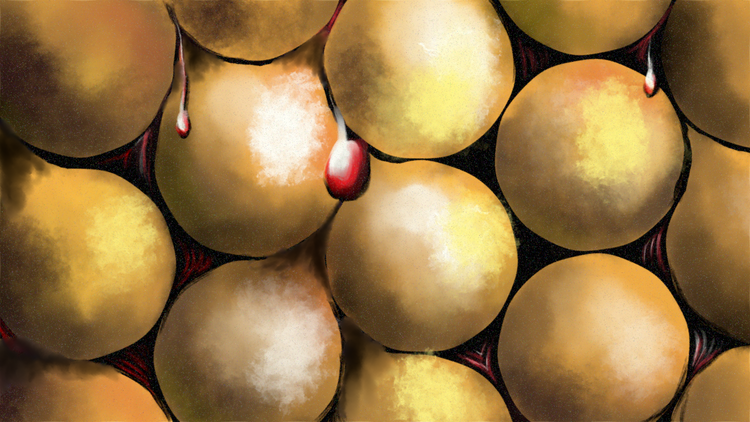



Member Commentary